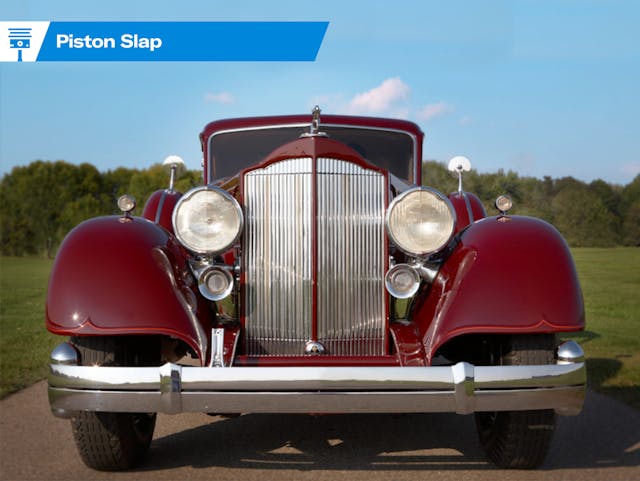Piston Slap: Dizzy over Packard ignition conversions

Michael writes:
I’m looking for an electronic ignition conversion for my 1935 Packard 120; it’s basically stock except for radial tires, 12 volt electrics, A/C, and overdrive. (Nothing that can’t be easily put back to factory stock.) Does anybody make an ignition conversion for this engine?
My current factory setup uses a dual point system: one set to run four cylinders and a second set for the other four. The distributor has a four-lobe cam. The distributor number is IHG4026-1. Any ideas without using a 37 single point, which necessitates changing the drive shaft of the oil pump?
Sajeev answers:
Probably one of the best things I do behind the scenes here at Piston Slap is to seek outside council when I need help* answering a question. Let me tell you, it woulda been nice to have the fine folks behind Ask Hagerty when I started this series in 2009!

My first thought was a PerTronix kit, quickly confirmed by my co-workers at Ask Hagerty. We’ve discussed solid state conversion kits in the past (here and here) and they are generally well regarded across the Internet. The cheapest PerTronix Packard conversion kit currently for sale is probably this one.
That said, I never considered a conversion to a single points system, but Ask Hagerty knows better. The benefit to this conversion is that it uses off-the-shelf points for ease of timing and far better availability. My co-workers recommended the kit offered by The Packard Parts Store, but we both caution you to call them first, ensuring you buy the right kit for your application beforehand.
So we have two options, but which one is the best for Michael? Well, he asked about a solid state ignition conversion, and PerTronix has him covered. The Packard Parts Store’s single-point setup is aimed towards owners who still appreciate the points ignition system, and don’t want to see the Hall effect sensor’s red and black wiring, poking out of the distributor assembly in a distinctly non-stock manner.
I am OK with that modest cosmetic change for such a significant upgrade, but what say you, Hagerty Community?
*Yes, you can Ask Hagerty yourself, provided you are a Hagerty Driver’s Club member. If not, see the note below and take advantage of it!
Have a question you’d like answered on Piston Slap? Send your queries to pistonslap@hagerty.com, give us as much detail as possible so we can help! Keep in mind this is a weekly column, so if you need an expedited answer, please tell me in your email.


My personal experience with points is that the major con – frequent adjustment and replacement for a daily driven car – generally does not apply to a collectible. My 74 corvette, which gets driven weekly, has the same set of points in it that it had when I bought it. Other than the initial sanding and adjusting, I have never touched them, and I have owned the car for better than five years now. I did a points-to electronic conversion on my ’79 Carver boat (against my better judgment) chasing down a performance issue that turned out to be a leaking intake manifold gasket. I think points get blamed for a lot of things they are not responsible for, and require less maintenance than what legend suggests. My neighbor converted his ’67 GTO to a Mallory electronic unit and wound up changing the ignition module out around once a year. My advice – stick with the points
Learned the same points lesson with my 72 Skylark Convert–points were replaced 15 years ago and are still good when you drive 500 mi/yr. Staying with points also worked well on my 1989 Ski Centurion boat–that does get full throttle slalom ski use on the Ford 351 (I let the Mastercraft dealer do that). Ski boats kept using points until mid 90’s when FI came in. The art of timing and dwell never loses fascination. I had a hard time finding a new dwell meter 15 years ago..